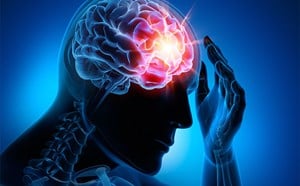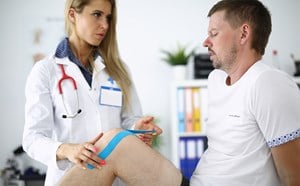
The Exertional Heat Stroke Working Group Meeting – Washington, DC
Exertional heat stroke (EHS) is a completely preventable disease, which occurs predominantly in athletes, laborers, and soldiers. Despite this, its incidence is on the rise. A working group, organized by Weber Shandwick and Eagle Pharmaceuticals, was created to better understand why the incidence is on the rise, develop strategies to prevent EHS, and consider the use of policy to mitigate the problem. A diverse range of stakeholders affected by or with the power to educate or create change were present, including victims of EHS, athletic directors, leadership from the construction association, meteorologists, policy makers, and physicians. I was there as the representative from ACEP.
Exertional heat stroke is a rare medical condition characterized by severe hyperthermia and neurological dysfunction. This is a medical emergency that typically affects young, active, and otherwise healthy individuals. Treatment delays result in major complications including brain damage, organ failure, and death. Both the diagnosis and institution of appropriate treatment for EHS pose dilemmas. As we know from working in the emergency department, EHS affects people at the peak of their lives, and like many other diseases with few treatment options, we don’t spend a lot of time discussing it. Common treatment modalities include cooling the body by physical methods (i.e. water immersion, ice-packs, water misting), and supportive measures including intravenous (IV) fluids and respiratory support. Individuals whose core body temperature rises above 104°F (40°C), which is common in EHS, risk severe organ dysfunction, and long-term disability. Approximately 30% of EHS survivors have persistent neurologic complications despite the use of aggressive cooling.
There are competing messages being given to the athletes – on the one hand, athletes are being told to ignore and play through the pain but on the other hand, athletes are being told to be honest about their symptoms and if they are not feeling well, they should tell the coach or athletic trainer. Changing human behavior is very difficult. EHS typically occurs in young people at the peak of their lives, in a culture where being the best, first and fastest comes with great rewards.
The day started with a “Patient Perspective” panel offered those most closely affected by EHS an opportunity to share their stories and experiences. During this session, we heart from an athlete who suffered from EHS in 2014 during his time as a collegiate football player at the University of Miami. He spent 18 days intubated in the ICU and 4 months in the hospital and rehabilitation facility. Then, we heard the story from a mother whose son died of multiorgan failure from EHS after being in the hospital for 18 days in 1995. Unfortunately, the diagnosis was not even considered while in the ED and the patient was never aggressively cooled. The mother has done quite a bit of work in her home state of Arkansas in helping to implement guidelines and protocols to minimize the risk of EHS.
We then heard from representatives from different populations at risk for EHS, including marathon organizers, construction workers and members of the military. The speakers examined how we can shift EHS from a hidden threat to a preventable condition by pointing to specific examples from their own experiences with some of these vulnerable populations. They also called for increased awareness and education of athletes, parents, and healthcare providers.
Next, we shifted our focus to the adolescent and pre-adolescent athlete. The lack of consistency among regulations and mandates as well as the need for more athletic trainers in both middle schools and high schools was highlighted. The group suggested finding ways to reach the medical community early on in their education and share to properly diagnose EHS.
There is a newfound sense of urgency around EHS and its potential long-term impacts on physical and cognitive function. Emergency providers, both in the prehospital and hospital setting, are asked to consider EHS early in the workup of a patient to avoid misdiagnosis. Until a rectal temperature is obtained, the diagnosis of EHS in the altered patient is elusive, and a source for delays in treatment. We know that the standard of care is cold water immersion, but we, the sports medicine section, need to educate our colleagues on how to operationalize this.
Like many other errors in medicine, EHS is the result of a “perfect storm” and is rare, but a completely preventable cause of death when identified and treated early.
Neha Raukar, MD, MS, FACEP


